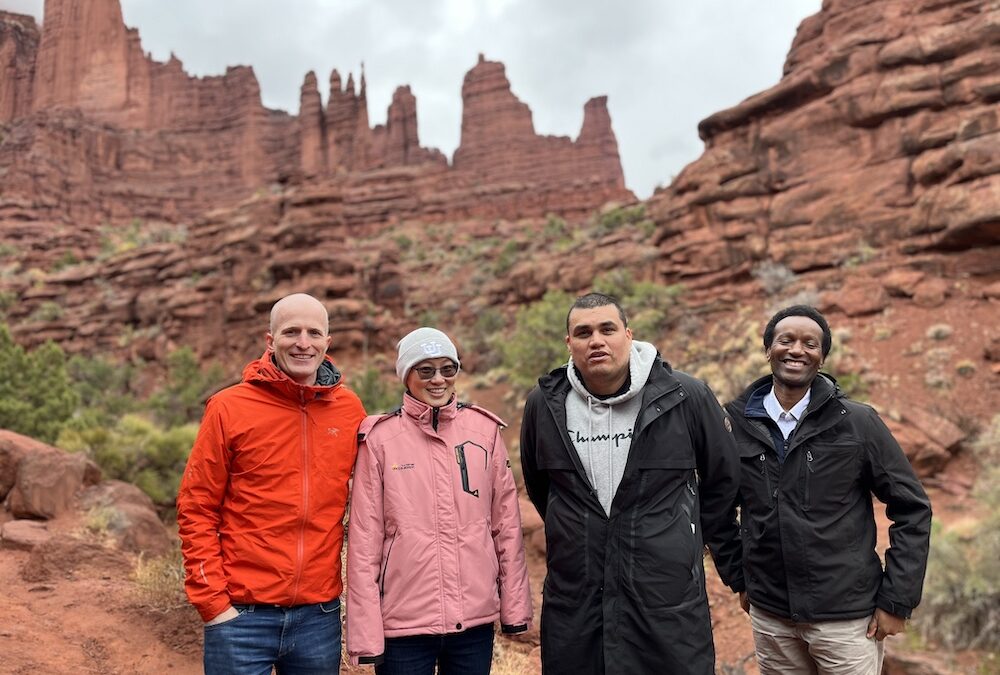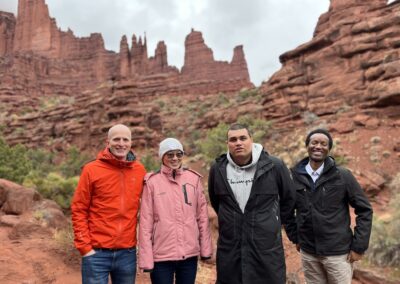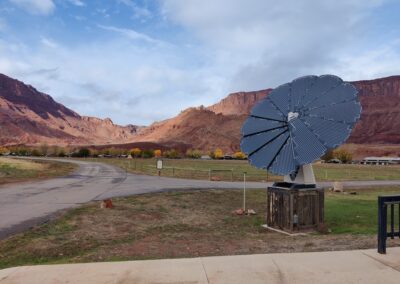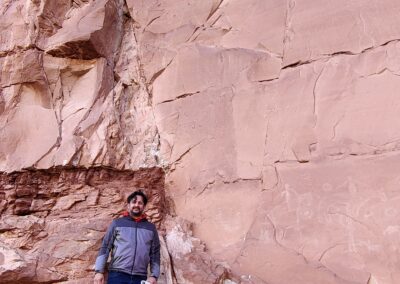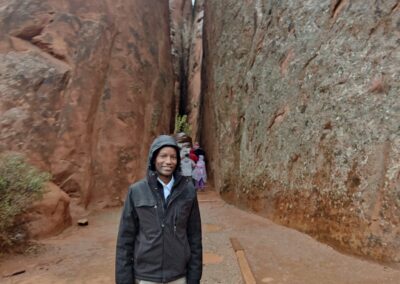The Carbon Science and Research Initiative of the Energy and Geoscience Institute, University of Utah, attended a geology field trip in the northern sector of the Paradox Basin, near Moab, Utah.
Addressing current research in unconventional oil and gas reservoirs, and carbon capture and storage (CCS), the field trip provided physical evidence in the project objective of optimize the completions and production in oil and gas wells in the Cane Creek formation, at the Gunnison Valley unit. Experts from different fields including geologists, geophysicists, petrophysicists, geomodelers contributed to the understanding of the multiple parameters of the complex stratigraphy ranging from Cretaceous Mancos shale, the fluvial and eolian sandstones of the Jurassic, to the marine mudstones and interlayered salts of the Pennsylvanian Paradox Formation, and the state of stress in the area, correlating current evidence of structures and faults to the chaotic geological history in the area, including the Moab Salt Valleys, the Uncompahgre uplift, the Moab fault, with unparallel outcrop exposure along the Colorado River drainage system.
Overall field trip objectives:
- Identify the geological structures, formation outcrops and evidence of fracture systems
- Understand the actual implications for accurate numerical modeling of the geological stresses and the resultant fracture network.
- Provide first-hand evidence of the petrophysical properties of the stratigraphic units.

